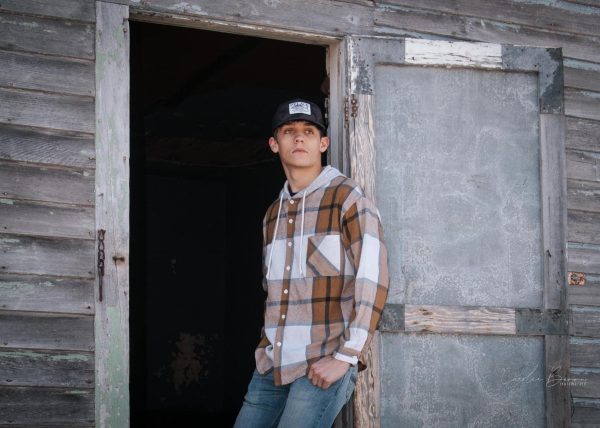Might drug baron Chapo Guzman be sent to the United States?
January 14, 2016
By Tim Johnson
MEXICO CITY — Security agents Friday recaptured notorious drug kingpin Joaquin “El Chapo” Guzman, six months after his second prison escape, thrusting Mexico again into a debate over whether it can ensure he remains behind bars.
Mexican marines located Guzman in Los Mochis, a coastal city in northwest Sinaloa state, the region that is a cradle of his crime group’s global narcotics empire.
Mexican President Enrique Pena Nieto sounded triumphant in his announcement of Guzman’s arrest on Twitter: “Mission Accomplished: We got him. I want to inform Mexicans that Joaquin Guzman Loera has been detained.”
But Mexico’s inability to keep Guzman securely behind bars places Pena Nieto under pressure to extradite the drug lord to stand trial and serve prison time in the United States, where an escape is considered less likely.
Within hours after his capture, a senator from Pena Nieto’s Institutional Revolutionary Party called for Guzman’s rapid extradition, a matter that has historically been thorny for the deeply nationalist party.
“I would ask as a senator of the republic that legal files be analyzed so that there is extradition of a man who has done a lot of harm and evil to many Mexicans,” Sen. Emilio Gamboa Patron told reporters.
Guzman faces indictments in at least seven U.S. jurisdictions. The most recent case, filed in the eastern district of New York in September 2014, accuses his criminal gang of smuggling 465 tons of cocaine into the United States between 1999 and 2014. It also accuses him as the mastermind of 13 murders. Other indictments against him are pending in Texas, New Hampshire, Illinois, California, the southern district of New York and the southern district of Florida.
The U.S. Drug Enforcement Administration tweeted that it was “extremely pleased at the capture of Chapo Guzman. We congratulate the MX Government and salute the bravery involved in his capture.” There was no word, however, on whether the United States would seek his extradition.
The details of his capture were fuzzy. A statement from the Mexican navy said marines came under fire when they approached a house in Los Mochis, following up on a tip of armed men inside. In the ensuing firefight, five attackers were killed and one marine was lightly injured, it said. Six men were detained.
But photos showed Guzman in what appeared to be a hotel room, and Milenio Television said he was captured at the Hotel Doux on the outskirts of Los Mochis, where he had fled with a key lieutenant, Orso Ivan Gastelum.
Photos appearing on social media showed Guzman wearing a gray undershirt and looking unharmed except for scratches on his arm. A video showed him being escorted to a small naval jet to be transferred to Mexico City.
At a midafternoon appearance in a courtyard of the national palace, Pena Nieto said Guzman’s arrest was the result of months of intense intelligence efforts that led agents to his whereabouts, indicating that the capture was not simply the result of a citizen tip. He hailed what he said was an interagency effort to capture Guzman.
“Mexico feels very proud of all of you,” Pena Nieto said, turning to his administration’s top security officials standing nearby.
He added that 98 of the 122 most wanted organized crime figures in Mexico have been captured or killed since he came to office in late 2012.
Guzman, head of a major crime group known commonly as the Sinaloa Cartel, is a master of prison breakouts. He escaped a maximum-security prison in Jalisco state in 2001, reportedly hidden in a laundry cart. Backed by U.S. agents on the ground and in the air, Mexican security agents recaptured him in February 2014 in Mazatlan, only to see him escape a maximum-security prison in the state of Mexico near Mexico City last July.
In that escape, Guzman fled through a mile-long tunnel, then traveled overland for several hours to a waiting airplane that Attorney General Arely Gomez said returned him to remote mountains in Sinaloa state.
Guzman, nicknamed “El Chapo” or “Shorty” because of his stature, was widely considered the world’s most powerful and wealthy drug boss. U.S. federal indictments say his crime group funnels multi-ton loads of cocaine from the Andean region to the United States and markets as far away as Western Europe and Australia.
In 2011, Forbes Magazine estimated Guzman’s wealth at $11 billion and said his crime group trafficked 25 percent of all narcotics entering the United States through Mexico, netting $3 billion in annual revenues.
Despite his immense apparent wealth, Guzman’s fugitive life has kept him on the run and forced him literally into the sewers to escape capture. Indeed, sewers and tunnels have been a hallmark of his career.
Guzman’s group specialized in sophisticated tunnels under the U.S. border, sometimes constructed by engineers working at gunpoint and in fear of execution. Some tunnels have had lighting, rail systems, ventilation and exit points with elevators.
In February 2014, Guzman escaped capture in the Sinaloa capital of Culiacan by slipping out of a tunnel located under a bathtub in a safehouse that led him to underground sewage canals. He was captured days later in a condominium in Mazatlan.
———
©2016 McClatchy Washington Bureau
Visit the McClatchy Washington Bureau at www.mcclatchydc.com
Distributed by Tribune Content Agency, LLC.
—————
ARCHIVE PHOTOS on Tribune News Service (for help with images, contact 312-222-4194):Joaquin Guzman







